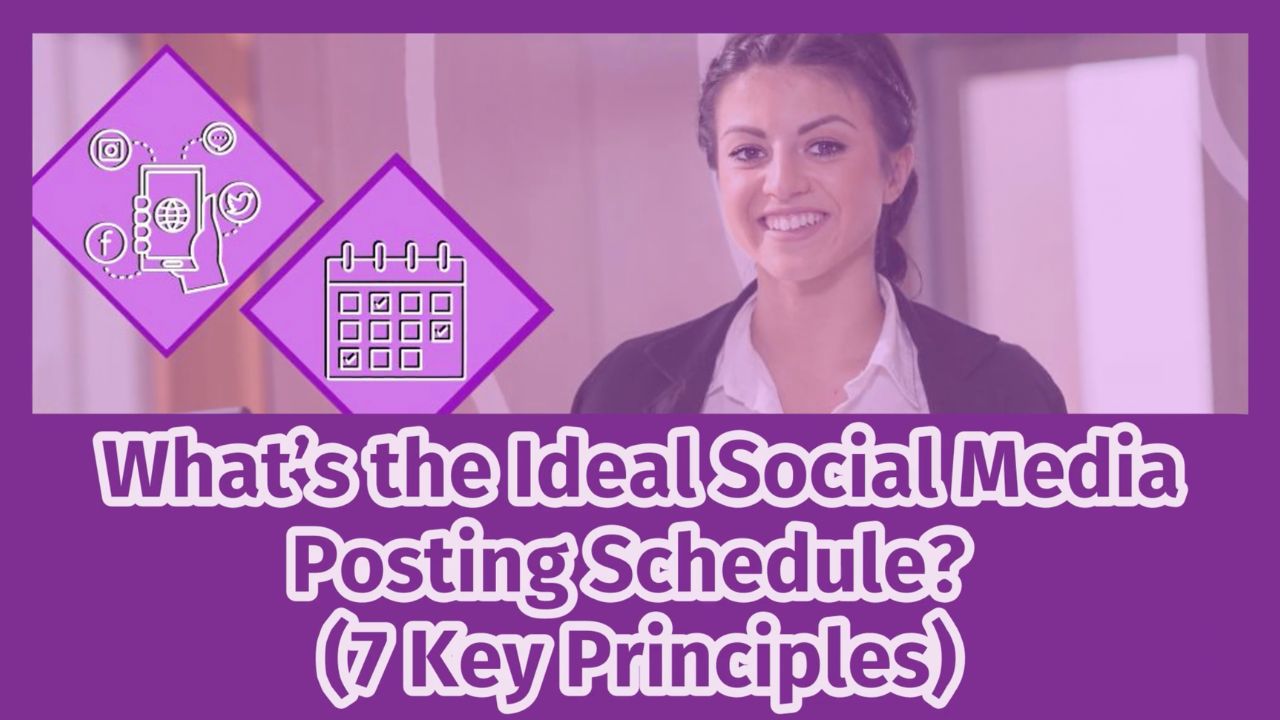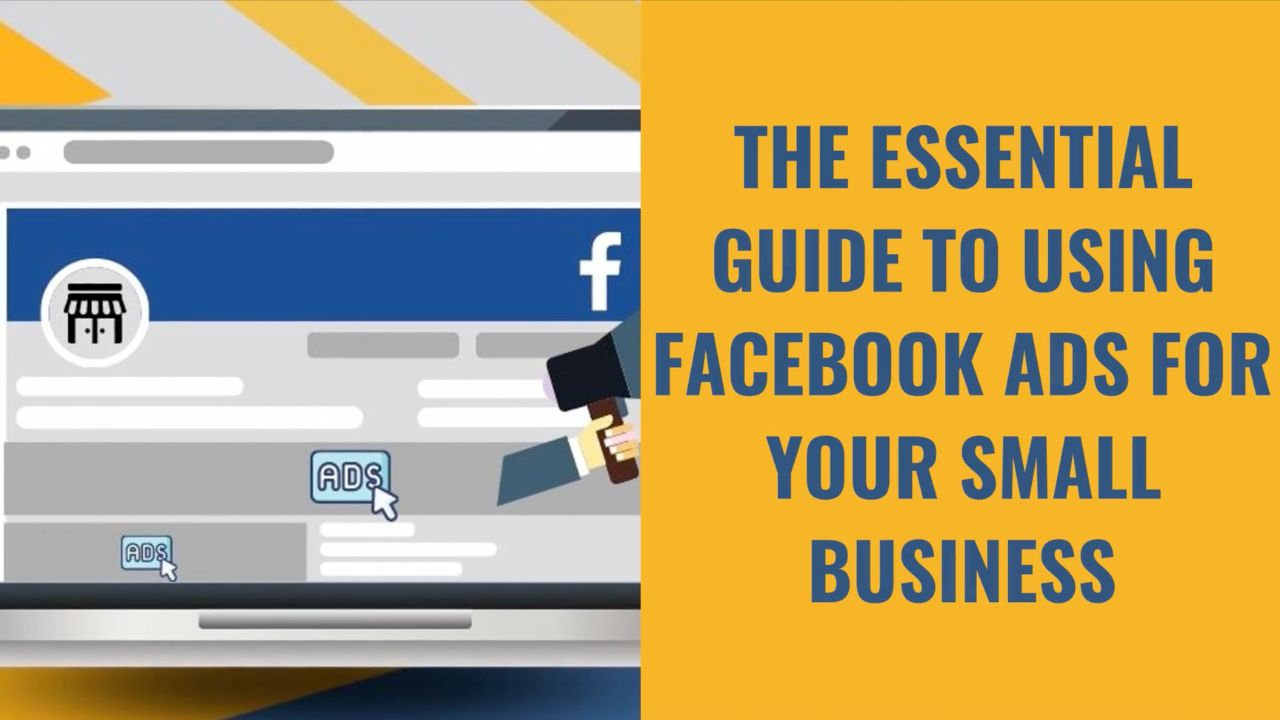Taking advantage of social media requires more than just great content.
It also needs an effective social media posting schedule.
In this post, we explore:
- Why having a social media posting schedule matters so much
- What the risks and downsides are from not using one
- How you stand to benefit by using one.
In addition, we look at 7 key principles for determining what an effective social media posting schedule looks like for you, including knowing your target audience, the use of appropriate automation. and more.
Let’s cut straight to the chase...
Why Does a Social Media Posting Schedule Matter?
If you’re not using a social media posting schedule at the moment, you’re likely experiencing some or all of the following:
- Inconsistent posting: you post sporadically, perhaps with long periods of inactivity. The result is less visibility, a weaker relationship with followers, and lower engagement levels. It’s hard building a relationship when you’re not around…
- Reduced authority: showing up inconsistently comes across as a lack of interest. The result can be negative perceptions about your value, credibility and authority, in turn further impacting engagement levels…
- Less algorithmic visibility: social media algorithms generally prioritize posts accounts that are publishing engaging content regularly. This provides better value for their users, which in turn grows platform revenues from advertisers…

- Increased stress: there’s no system in place for what to post and when, leading to anxiety about what to post, background stress when you don’t do so, and a general sense of overwhelm and not being in control…
- Missed opportunities: sporadic posting and a lack of focus on social media means you’re missing out on opportunities to engage with your audience, forge connections with thought leaders and potential partners, boost revenues via an authoritative social presence … and more besides!
But that’s enough negativity…
The good news?
Once you determine and start to follow a social media posting schedule that makes sense for you, all of those negative experiences start to dissipate.
The advantages of a social media posting schedule include higher visibility and engagement, growing authority and social proof, less stress... and finally feeling in control!Click To Post OnInstead, you start to experience:
- Posting consistency: you keep showing up which means you’re more visible, attract higher engagement, and stay front of mind for your audience…
- Growing authority: showing up consistently leads to positive impressions of reliability, trustworthiness and value. Plus, increased engagement levels help build social proof…
- Growing algorithmic visibility: by working with the social media algorithms and supplying what they need, your posts grow in visibility and reach…
- Increased focus: with what to post and when taken care of, you’re free to focus elsewhere…

- Greater confidence: having social media covered provides increased confidence when communicating with customers (and a warmer reception when you do so), helping to increase sales, grow customer value and build revenue…
- More opportunities: with more social visibility and higher authority levels, you’ll find you attract an increasing number of opportunities, including customers coming via social media, and new business connections that can lead to future cooperation and revenue opportunities.
In addition, a social media posting schedule means you can:
- Plan content in advance: as well as being far more efficient, it helps make content more engaging, and you can plan who does what more effectively…
- Gain more effective audience insights: posting more regularly and consistently means more data with greater insights into your audience, in turn helping you to…
- Post at optimal times: maximize visibility and engagement, and help grow your audience.
So, the advantages of a social media posting schedule are clear…
But how do you determine what an effective schedule looks like for you?
Let’s take a look…
Key Principles for Determining the Best Social Media Posting Schedule for You
1. Know Your Target Audience
You don’t generally see street sellers positioning themselves on quiet backwater streets that few people frequent.
Instead, they go to where the action is, where they know there’s a lot of throughput of traffic, where the traffic consists of the type of people with an interest in what they sell, and at times when their interest is heightened and are more likely to engage with them.

The same principle applies to social media.
Why go to the effort of creating content to post, but then show up at suboptimal times, with fewer people about or with people who won’t generally resonate with your message?
This is why it’s so important to get to know and understand your target audience, including when they’re more likely to be active, receptive and engaged.
And because the social media platforms understand the importance of this too, they give you the tools to help, such as Meta’s Insights tools on Facebook and Instagram, X’s analytics for Premium users, and similar on other platforms.
While reports abound about the best days and times to post on different platforms (such as these for Facebook), it’s important to understand that these are based on broad averages, often across millions of accounts in different time zones and serving different niches.
To help determine an effective social media posting schedule, look for the times and days of the week that tend to attract higher engagement.Click To Post OnDrilling down into a specific niche and even business will often give you an entirely different story.
So it’s important to keep a close eye on your own data and look for trends over time that show you that posting on particular days of the week and at particular times tend to give you higher levels of engagement.
As you start to gain these insights into your own audience, you can optimize your social media posting schedule accordingly.
2. Understand Platform-Specific Factors
The second aspect to gain a good understanding of is the particular characteristics of the social media platform you’re posting on.
For example, each platform has a distinct culture, operates with a different algorithm, and its users have completely different expectations in terms of posting frequency.
In terms of the latter, while posting several times a day might work well on X, doing the same for your LinkedIn Page is likely to have the opposite effect.
And of course, to determine the best social media posting schedule for your business, an understanding of optimal posting frequency is vital.

So to help, we’ve created full guides on finding the optimal posting frequency across many of the top platforms:
You’ll notice that each has certain similarities, such as posting regularly and consistently, but also some differences too in terms of how their respective algorithms work.
As well as posting frequency, there are also the different types of content you can publish, which sometimes have their own optimal frequency requirements.
For example, Instagram has recommended posting a couple Stories every day, but only a couple times a week for a normal feed post.
And of course some platforms like Pinterest and Instagram are far more visual than others, and this feeds directly into how you design your posting schedule.
Note too that the different features and algorithms of the various platforms are in a constant state of flux, so it’s important to keep abreast of any changes and be willing to adjust your posting schedule as and where needed.
3. Be Regular and Consistent
A continuous mantra of this blog (and one already mentioned in this post) is the importance of posting regularly and consistently, which of course a social media posting schedule helps you to do!
One of the best ways to maintain that consistency is to systematically repurpose content you regularly publish on other platforms.
For example, long-form content posted to a blog can be repurposed into multiple types of content suitable for social media, giving you a regular supply of new posts using different media.
If you’re unsure where to start in repurposing content for social media, the following video provides a quick overview — then click here for the full guide.
Consistency builds trust, helps keep your brand top of mind, attracts optimal algorithmic benefits, maximizes data collection and insights into your audience, and grows engagement levels.
At the same time, remember to…
4. Focus on Quality Over Quantity
The trick with being regular and consistent is in managing your posting frequency so that the quality of your posts don’t suffer by trying to do too much, too quickly.
If you’re producing low-quality posts that attract low levels of engagement, the algorithms will simply learn to reduce the reach of your content, harming your longer term results.
Far better then, to focus on creating quality posts designed to maximize engagement, even if that reduces the number of times you’re able to post per day or week.

And it needn’t be onerous…
With a systematized process for repurposing content into social media posts, as per the video above, you allow the amount of content you’re posting to grow in a far more manageable, practical and sustainable way… and to keep that content engaging.
To maximize engagement, each post you publish needs to:
- Offer value to your audience…
- Resonate with your customer avatar…
- Align with your brand’s identity and messaging.
5. Use Automation to Help
Automation can be incredibly valuable in helping you to post regularly to social platforms, including scheduling your posts at optimal times without requiring manual effort.
But be careful not to take it too far.
A general principle is to use automation wherever it helps build efficiency, but not at the expense of:
- The quality of your posts
- Engagement with your audience
So if you have an automated bot that posts to different platforms whenever you say publish a new blog post, it may save time, but:
- You’ll miss opportunities for engagement by being present on the platform in question…
- The generated posts will likely be easily identified as automated, costing you followers, loyalty, engagement, reach, and so on…
- The content won’t be anywhere near as effective as if you’d taken the time to craft a proper post that had been effectively repurposed from the original content to suit the platform and audience in question (which even then, a tool like Trafficonomy can semi-automate and make as efficient as possible, saving multiple hours a month).
Automation can help in terms of:
- Efficiency: use automation to help with your content workflow, including repurposing, and post scheduling (it’s far easier scheduling posts in advance than to manually post at the scheduled time)...
- Consistency: we’ve already talked about the importance of regular, consistent posting—automation helps you achieve it…

Above all, aim to achieve a balance between automation and the human touch, in order to build and maintain an authentic and engaging presence on the different platforms on which you are active.
6. Test Continuously
The ideal social media posting schedule isn’t set in stone. It should be flexible and adaptable to what you keep you discovering through your testing…
And, because things change so rapidly in Social Media Land, you should be testing continuously, analyzing your results, and making changes based on your findings…
Aspects to test include the use of different posting schedules, content types and strategies.

To analyze your results, look at the impact on engagement metrics such as likes, comments, shares and click-through rates.
But rather than focusing on short-term data, you’re looking for trends and patterns that show themselves over time once sufficient data has accumulated.
And to be able to spot such trends, you must also…
7. Monitor Your Metrics
As stated in #1 above, most social media platforms provide some kind of data analysis function so you can monitor key metrics such as:
- Reach and impression data…
- Engagement stats…
- The number of followers, and how this is changing over time…
- Audience demographics.
In addition, using website analytics software like Google Analytics can help you monitor visitor metrics for visitors arriving from social, including:
- Bounce rate…
- Conversion rates, such as for leads and sales…
- Dwell time (how long they stay on your site)...
- Repeat visitor counts.
This all helps judge performance of your posting schedule, and you can test changes (as in #6 above) to try to improve it.
In addition to the in-built social platform tools, there are a number of third-party social media analytics tools with a variety of features such as competitor analysis and the ability to retain data for a longer period of time (for the in-built tools, this can be as little as thirty days).
We’ve already mentioned one of them, Google Analytics. The following video gives you a quick overview of another nine, with a fuller description of each one available here.
Frequently Asked Questions
Why does having a social media posting schedule matter?
Having a schedule ensures posting consistency, increased authority, improved algorithmic visibility, reduced stress, and more opportunities.
How do you determine what an effective social media posting schedule looks like?
Look for times and days with higher engagement levels from your own data, then optimize your schedule according to audience insights.
Why is it important to be regular and consistent with social media posting?
Consistency builds trust, keeps your brand top of mind, enhances algorithmic benefits, improves audience insights, and boosts engagement levels.
How can automation help with social media posting schedules?
Automation aids with efficiency in content workflow and post scheduling, promoting consistency in posting, but should not compromise post quality or audience engagement.
Why should you test continuously to optimize your social media posting schedule?
Continuous testing helps adapt to changing trends, analyze results, and refine strategies for improved engagement and effectiveness over time.
To Conclude
As we have seen, having an effective posting schedule is crucial for maximizing your visibility on social media platforms and reaping many of the benefits they offer.
It means you can start showing up more consistently and creating more engaging posts when you do so through forward planning and more efficient resource allocation.
In turn, that translates into advantages such as growing audience numbers, authority levels and opportunities for engagement and revenue.
But there is no one-size-fits-all schedule.
Instead, it’s a case of determining the ideal social media posting schedule for you by following the seven principles described above, including knowing your audience, understanding the platform’s characteristics, testing continuously, and using automation to make it as efficient as possible without compromising on quality or real engagement with your audience.



